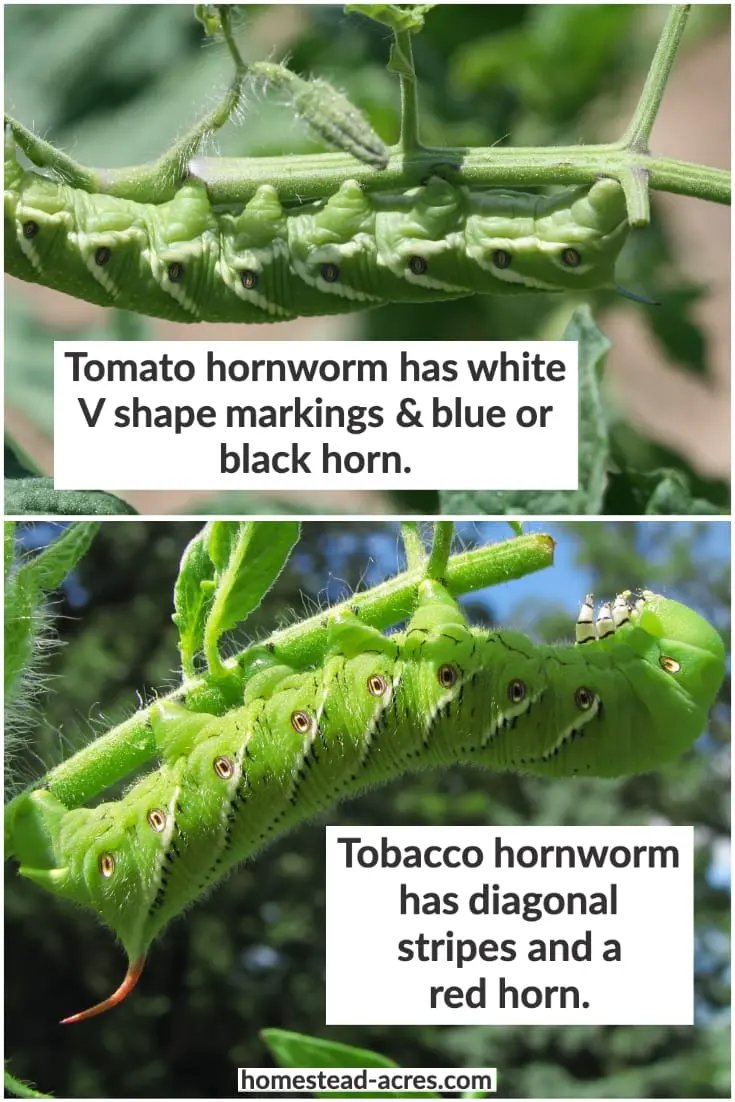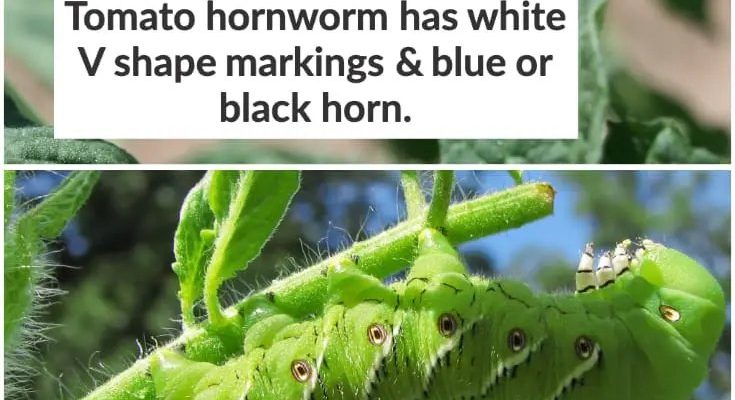
Let’s set the scene: picture your thriving garden filled with vibrant tomatoes and lush tobacco plants. Suddenly, you notice some leaves looking a bit chewed up. Is it a tobacco hornworm or a tomato hornworm doing the damage? Understanding their unique traits can help you decide how to tackle the problem and protect your precious plants. So, grab a cup of coffee, and let’s dive into the world of hornworms!
What are Tobacco Hornworms?
Tobacco hornworms, scientifically known as *Manduca sexta*, are notorious for their voracious appetites. These caterpillars are the larvae of the Carolina sphinx moth. If you’ve ever spotted a thick, green caterpillar on your tobacco plants, it’s likely a tobacco hornworm. They can grow quite large, often reaching up to 4 inches in length.
What makes these hornworms particularly interesting is their striking appearance. They have a horn-like projection on their rear end, which gives them their name. This feature can look intimidating, but it’s mainly a defense mechanism against predators. When you spot one, you might see them munching on leaves, leaving behind large, ragged holes. It’s like they’ve been having a feast in your garden!
This pest primarily targets tobacco plants but isn’t shy about nibbling on other plants, like tomatoes or peppers, especially if their preferred food is scarce. That said, if you’re growing tobacco, you might want to keep a close eye on these hungry intruders!
What are Tomato Hornworms?
On the other side of the pest spectrum, we have tomato hornworms, known scientifically as *Manduca quinquemaculata*. These caterpillars are very similar in appearance to their tobacco counterparts but might be a little less familiar to those who don’t grow tomatoes. Just like the tobacco hornworm, they can also grow to about 4 inches in length and have that recognizable horn on their tail.
The tomato hornworm’s primary diet consists of tomato plants but, much like the tobacco hornworm, it can also munch on other plants in the nightshade family, such as eggplants and peppers. If you notice your tomato leaves looking like they’ve been through a shredder, you might be dealing with a tomato hornworm.
What’s fascinating about tomato hornworms is their ability to blend in with their environment. Their green coloration allows them to camouflage effectively among the tomato leaves, making them quite sneaky. So, if you’re hunting for these pests, keep your eyes peeled!
Key Differences Between Tobacco and Tomato Hornworms
Now that we’ve introduced both types of hornworms, you might be wondering what sets them apart. While they look similar, there are some key differences that can help gardeners identify which one they’re dealing with.
First off, let’s talk about their markings. Tobacco hornworms have a series of white diagonal stripes along their sides, while tomato hornworms sport a more distinctive V-shaped pattern. These differences can be subtle, but once you know what to look for, they become much easier to spot.
Furthermore, the plants they target are another telling factor. Tobacco hornworms primarily go for tobacco plants, but will happily munch on others like tomatoes when needed. In contrast, tomato hornworms confine their appetite mostly to tomato plants. So, if you’re noticing caterpillar damage predominantly on your tomatoes, chances are you’re dealing with tomato hornworms!
Life Cycle of Tobacco and Tomato Hornworms
Understanding the life cycle of both hornworms can help you anticipate their arrival and take action. Tobacco hornworms start as eggs laid on the leaves of tobacco or other susceptible plants. After about a week, these eggs hatch into tiny caterpillars. Once they emerge, they begin feeding voraciously, progressing through several instar stages, or growth phases, until they reach full size.
Once they’re ready to pupate, they will drop to the ground and enter the soil, where they transform into pupae. After this stage, they emerge as adult moths, starting the cycle all over again. This entire process can take anywhere from a month to two months, depending on environmental factors.
Tomato hornworms share a similar life cycle but can be found emerging from the soil around the same time as the tobacco hornworm. As they develop through their instar stages, they go through several transformations, much like their tobacco counterparts. The key point here is that both pests can overlap in time, so vigilance is essential to protect your plants!
Impact on Your Garden
Both tobacco and tomato hornworms can have a significant impact on your garden, especially if they’re left unchecked. Their powerful jaws can strip leaves, stems, and even fruit, which can lead to decreased yields and unhealthy plants. If you’re excited about a bountiful harvest, a hornworm invasion can be a real buzzkill!
Moreover, the damage caused by these pests can create entry points for diseases, making your plants even more vulnerable. This can be particularly concerning for gardeners who focus on maintaining organic practices. Being proactive in managing these pests is key to keeping your plants healthy.
You might be wondering, “What can I do to prevent this?” Keep your garden clean, regularly inspect your plants, and even consider introducing natural predators like birds or beneficial insects. This can help maintain a balance and ward off hornworms before they become a real issue.
How to Get Rid of Hornworms
If you find yourself in the unfortunate position of having hornworms in your garden, don’t panic! There are several ways to manage these pests effectively. Here are some options to consider:
- Handpicking: The most straightforward method is to simply pick them off your plants. You can wear gloves if the idea of handling them is a bit off-putting. Just make sure to check both the tops and undersides of the leaves.
- Beneficial Insects: Introducing beneficial insects like ladybugs or lacewings can help keep hornworm populations in check. These insects feed on hornworms and other pests.
- Natural Sprays: Consider using natural insecticidal soaps or neem oil. These can deter hornworms without harming beneficial insects.
- Encourage Birds: Birds love to snack on hornworms. By attracting birds to your garden, you can naturally control hornworm populations.
Each of these methods has its pros and cons, so you might want to mix and match strategies to find what works best for you and your garden.
So, there you have it! Understanding the differences between tobacco hornworms and tomato hornworms not only helps you identify them but also equips you with the knowledge to tackle them effectively. The next time you wander into your garden and spot those munching caterpillars, you’ll know exactly what type of hornworm you’re dealing with and how to protect your beloved plants.
With a little vigilance and the right strategies, you can keep your garden thriving and free of these pesky pests. Happy gardening, and may your plants flourish!

